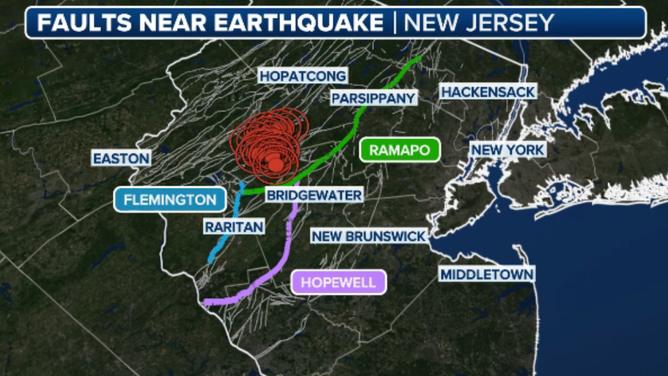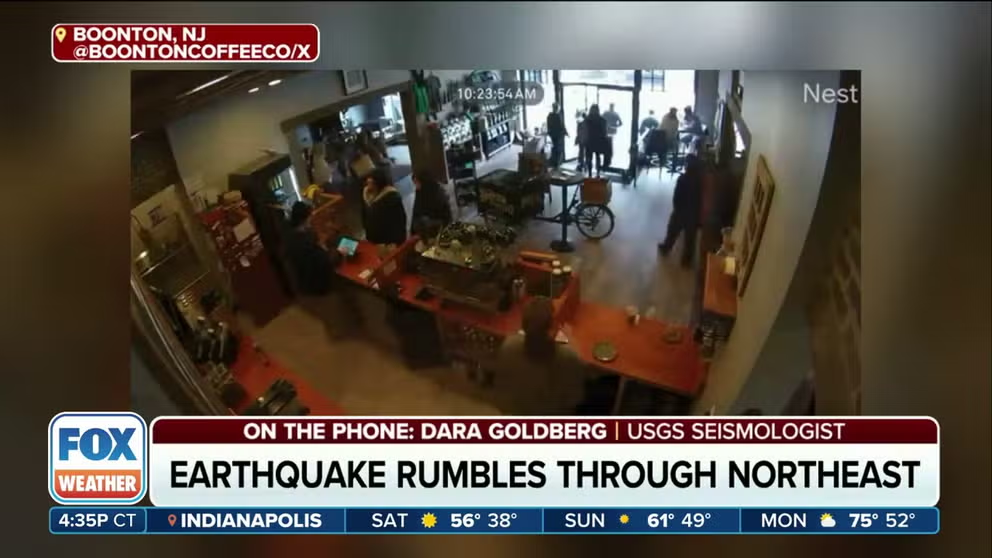What was the greatest earthquake to ever impact New York City?
Quakes in the eastern U.S. are generally felt in a wider region than comparable magnitudes that occur in the West due to the region’s bedrock. The Ramapo Fault region, which runs along the eastern edge of the Appalachian Mountains, is a major source of many of the quakes.
USGS working to determine which fault was to blame for the Northeast earthquake
Residents in more than a dozen states felt Friday’s magnitude 4.8 earthquake but when compared to seismic records, it wasn’t the greatest quake to impact the Tri-State region.
NEW YORK – Residents in more than a dozen states felt Friday’s magnitude 4.8 earthquake, but when compared to seismic records, it wasn’t the greatest quake ever to impact the New York Tri-State region.
According to data from Columbia University’s Lamont-Doherty Earth Observatory, earthquakes in both the 1700s and 1800s were given greater magnitudes by seismologists.
A magnitude 5.2 earthquake that rattled the Tri-State in 1884 is thought to have been the most significant event to impact the region.
According to the university, buildings shook from Maine to Virginia, but chimneys took the brunt of the impact.
Quakes in the eastern U.S. are generally felt in a wider region than comparable magnitudes in the West due to the region’s bedrock.
"Ground shaking affects a larger area because amplitudes of seismic waves decrease more slowly in the East than in the West as the distance from the causative fault increases. Eastern North America has older rocks, some of which formed hundreds of millions of years before those in the West…So when an earthquake occurs, more of the seismic wave energy is absorbed by the faults and the energy doesn’t spread as efficiently," the United States Geological Survey previously noted.
According to a seismic intensity scale, earthquakes that reach an equivalent magnitude of around 2.5 or below are rarely felt, but once a quake reaches over a 3.7, nearly everyone feels the shaking.
STRONGEST NEW JERSEY QUAKE IN 240 YEARS FELT ACROSS NEW YORK CITY, NORTHEAST ON FRIDAY
What causes earthquakes in the Northeast?
There are several faults that run through New Jersey and the Northeast, but seismologists say many quakes are the result of region around the Ramapo Fault.
The fault line runs from New York through eastern Pennsylvania and is thought to be hundreds of millions of years old.
According to experts at Columbia University, the fault formed when the North America and Eurasia continents split, but since then, faults such as the Hopewell, Flemington-Furlong and Chalfont have been identified.

New Jersey fault map
(FOX Weather)
"We don’t know yet what the causative fault is", Dara Goldberg, a USGS seismologist, told FOX Weather in the hours after Friday’s quake. "Whether this occurred on a strand of the Ramapo Fault or an adjacent fault, or even potentially a fault that doesn’t have a name yet. So, that’s something that our team will be looking into in the coming days to try to see if we can pinpoint the location with enough accuracy to determine which fault it actually occurred on."
The occurrence of a magnitude 5.0 or greater quake along the Ramapo Fault is said to happen around every 200 years.
See how residents and animals react to the 4.8-magnitude earthquake in the Northeast
A 4.8-magnitude earthquake struck north-central New Jersey on Friday, but millions in more than a dozen states felt the ground shake.

